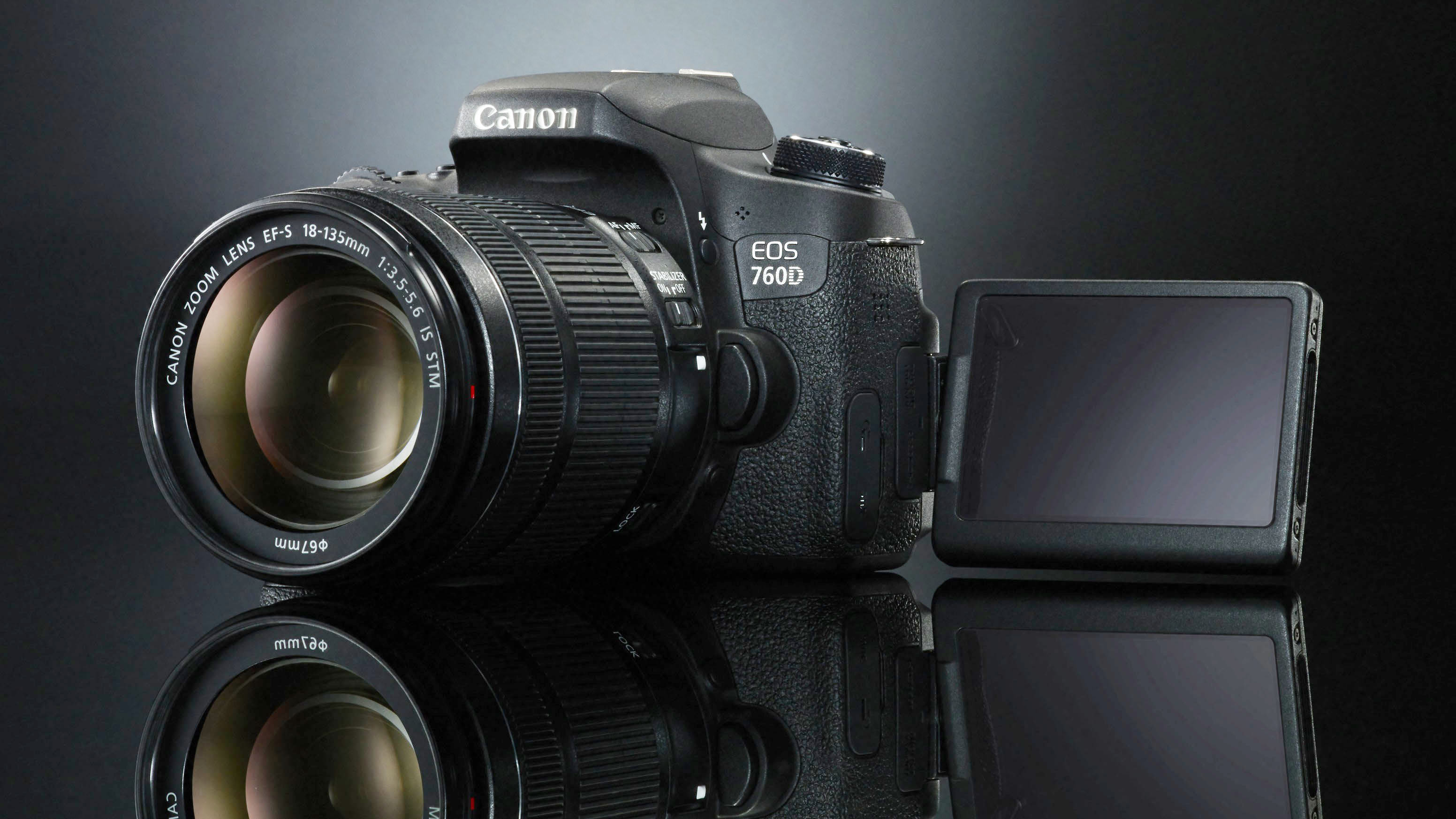Why you can trust TechRadar
While they are essentially the same camera on the inside, the 750D and 760D are a little different on the outside. The most noticeable difference between the two cameras is the presence of a secondary (monochrome) LCD screen on the 760D's top-plate. This shows useful information such as the ISO (sensitivity) setting, battery level, exposure level, shutter speed and aperture. It seems less relevant with a camera that has a vari-angle screen, but it comes in handy and uses less power than the main screen.
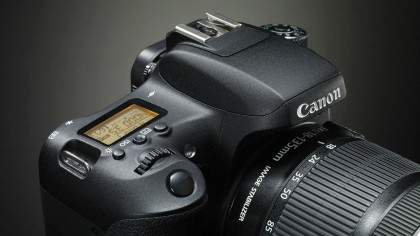
Though the 750D and 760D feel very similar in the hand, the 760D is actually 0.2mm taller and, as we found out when swapping between the two on a tripod, the lens is in a different position relative to the tripod bush.
Compact system cameras have shifted our perception of camera size, but the 760D is fairly small for an SLR. Nevertheless, it's deep grip is comfortable and when my forefinger is on the shutter release, there's enough room for me to fit on my remaining three fingers. Those with chunkier digits may find that their little finger slips under the camera body.
On the back of the camera there's a shallow, but effective ridge that you can press your thumb against so you get a nice, secure grip. Patches of a rubber-like coating on the grip and thumb rest add purchase. With the 18-55mm kit lens mounted the 760D is light enough to be carried in your hand for long periods of time, but a decent strap is supplied if you prefer to use one.
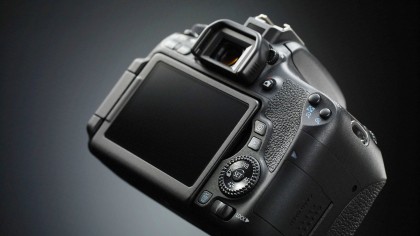
The 760D's screen is very responsive to touch and I found I swapped instinctively between using the physical controls and the screen for making settings changes or checking images. It's helpful that both the Quick Menu and main Menu can be navigated using touch-control and the pinch-zoom gesture is especially useful for checking image sharpness.
In another obvious difference from the 750D, the 760D's mode dial is on the left of the top plate not the right, and it has a locking button in the centre. This button needs to be pressed before the mode dial can be rotated. It seems rather fiddly at first, but you get used to using it after a while. It would be better if you could select whether to lock the dial or leave it unlocked though.
As on the 750D, the power switch is under the mode dial. Pushing the switch beyond the 'on' point activates the camera's video Live View mode, from here a press of the record button (also the stills Live View button) starts movie recording.
In another major departure from the 750D, the 760D has a dial around the navigation buttons – along with a lock to deactivate it. This is similar to the dial on the 70D and it allows quicker adjustments to exposure in manual exposure mode and exposure compensation in the automatic and semi-automatic exposure modes because, unlike on the 750D, there's no need to press a button while using the main dial.
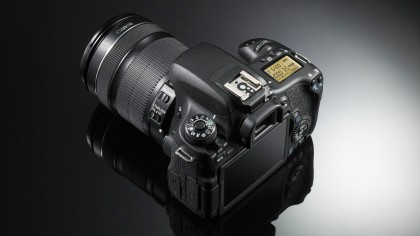
The dial feels a little lightweight in comparison with the larger dial found on the back of higher-end cameras. It's also rather low down on the body so it doesn't fall within the natural reach of your thumb – you have to stretch down to it. Nevertheless, it is an improvement upon the 'button-and-dial' approach on the 750D.
Just above the viewfinder on the 760D there's a sensor to detect when the camera is held to your eye to take a shot, and automatically turns off the display on the main screen. On the 750D you have to switch the screen off manually by pressing the Display button or half-pressing the shutter release. This sensor can be a little bit of mixed blessing because the screen sometimes turns off when your hand goes near the viewfinder while using the camera's controls. Helpfully, the sensor is deactivated when the Quick Menu is activated.
The screen provides a clear, detailed view in all but very bright conditions and it's useful for composing images at awkward angles. I tend to use the screen to set AF point, but the shutter release button to trip the shutter. Occasionally, however, it is helpful to use Touch Shutter mode to trigger the camera to focus and release the shutter with one tap of the screen. It would be helpful if the screen could be used to set the AF point while the camera is held to the eye; instead the AF Point Selection button has to be pressed followed by the navigation buttons.
While the 760D's viewfinder is quite bright and details clear, as usual, I find it easier to focus manually when viewing the scene on the main screen. The enlarged view makes it easier to be certain that the most important areas are sharp.
As mentioned earlier, it's possible to display the electronic level in the viewfinder and this proves very useful, especially as it doesn't use the AF points and can be seen even when the shutter release is depressed. However, the icon is hard to see in low light conditions or when the subject is dark.
The on-screen electronic level display is especially helpful when shooting from awkward angles.
Rather than having a dedicated Wi-Fi indicator on the camera body like the 750D, the 760D displays when the Wi-Fi system is active in the top-plate LCD. Neither camera has a dedicated Wi-Fi activation button – this is done via the menu.
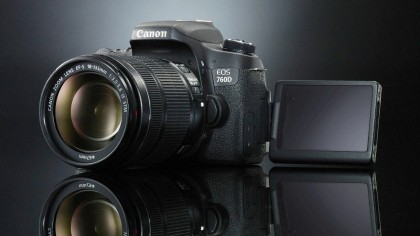
It's easy to connect the 760D's Wi-Fi system to a smartphone and the free Canon Camera Connect app allows remote control and quick image transfer. When Remote Shooting is selected the app can be used to adjust exposure (shutter speed, aperture and sensitivity) and focus can be set automatically, by tapping the desired point on the Live View image on the phone screen.
The differences between the 760D and the 750D below it in Canon's line-up mainly impact upon the handling and I think they make the extra money worthwhile. Although the 760D is billed as being for more advanced users than the 750D, novices are unlikely to find the 760D trickier to use once they understand the purpose of the Quick Control Dial.
